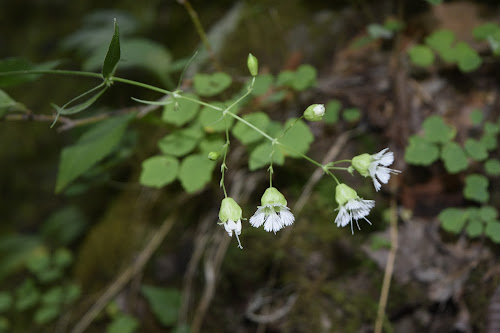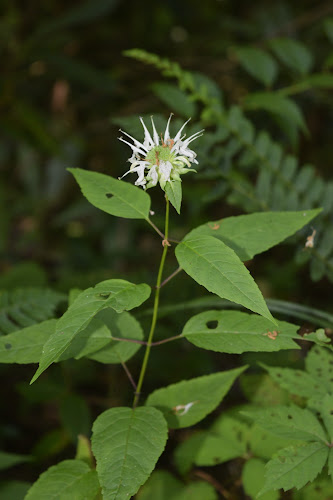Destination Yellow Fringed Orchid!
In late July of 2016 while driving US 129, otherwise known as the Dragon's Tail, we spotted a stand of lovely triplets! Perched amid the roadside shrubs and weeds three orchids posed for their portrait. I obliged!
So now in late July 2020 we decided a country drive along the Foothills Parkway and Dragon's Tail to the Twentymile Trail would not only take us past the roadside site but would provide an opportunity to check on other sites for the Yellow Fringed Orchid (Platanthera ciliaris).
We never quite know what to expect on a return to any site. We were disappointed to find that the steep banks along the highway had been skinned by the state's bush-hogging. I understand the need to cut back overgrown vegetation, but the bare slopes and banks were already starting to show severe erosion.
I feared the orchid's habitat had been destroyed.
To my delight I spotted another yellow-orange blossom: Carolina Lily (Lilium michauxii) named for André Michaux, the French botanist who traversed the Appalachians [no long a's in the word] identifying plants.
This striking flower is the state flower for North Carolina.
It's easy to mistake the smaller Carolina Lily for its larger near cousin the Turk's Cap Lily (Lilium superbum), which is distinguished by a green star in the center of the flower. Also, Carolina Lily usually bears only 1-4 blossoms per stem where Turk's Cap's blossoms are displayed in a noticeable candelabra formation.
At last we spotted what we came to see: the Yellow Fringed Orchid (Platanthera ciliaris). Most of the plants we saw, although abundant in a couple of spots, were small with sparse inflorescence.
Patience paid off!
Around a curve we spotted a pair of perfect orchids.
I'm thankful that I didn't have to climb a bank or wade through chigger-laden weeds to photograph these beauties!
I cannot explain my fascination with these wondrous flowers. Wild orchids are contrary and unpredictable for the most part, so to find these two large flourishing specimens was encouraging.
After photographing the orchids, we headed for the Twentymile Trailhead hoping to find Three-birds Orchid (Triphora trianthophoros). We spotted a spent Starry Campion (Silene stellata).
Basil Bee Balm (Monarda clinopodia) was still hanging on.
Look closely to see the tiny pollinators on this Flowering Spurge (Euphorbia corollata).
Identifying lichens, spleenworts and mosses will be my next task!
A lone Puttyroot Orchid (Aplectrum hyemale) seed pod from a previous year indicates another orchid thrives in this area.
Showy Orchis (Galearis spectabilis) this size with this many seed pods indicate it is quite content to grow in this rich hardwood forest. Perhaps this spring I can check it out and capture its gorgeous blossoms!
Twentymile Cascades were flowing full this time of the year.
Lush vegetation flourished from all the rainfall this season.
Let's get a closer view of the cascades!
Cateby's Trillim (Trillium catesbaei) with a seed pod awaits ripening. Ants will carry off the seeds to their nests, feast on the elaiosome surrounding each seed, remove the stripped seeds outside the nest where they may produce new plants in 5 or 6 years.
Alas, no Three-birds Orchid!
Slowing as we approached a steep curve along the Dragon's Tail, we allowed a small black bear to cross in front of us. We could not determine whether it was a scrawny juvenile or a young bear separated from its mother. It scurried up the mountain slope.
What a rewarding day! On a spur-of-the-moment decision to check on a familiar flower, we encountered scenic beauty along the Foothills Parkway, spotted a variety of wildlife such as deer, bear and turkey, found our orchids, enjoyed the full cascades and a pleasant hike along Twentymile Creek.
The only drawbacks to our exploring were two ticks and lots of chiggers...all a fair trade-off for the rewards of spending time in God's amazing creation!

































































